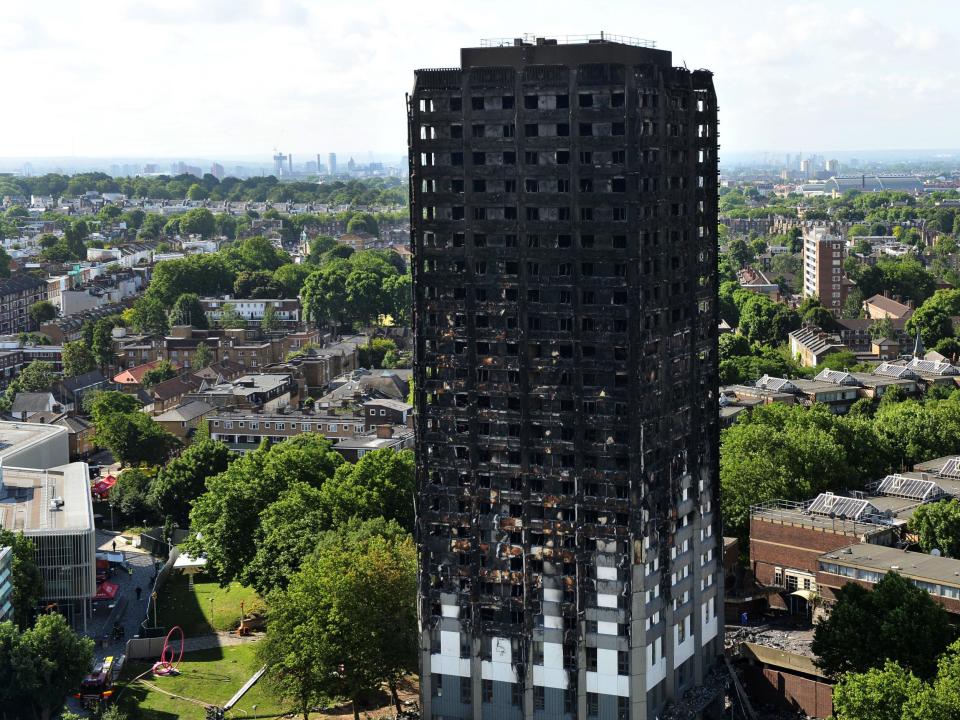All homes should be fitted with sprinklers to save lives, says Grenfell Tower fire safety report

All residential buildings should be fitted with sprinklers to save lives, according to a committee which investigated fire safety in the wake of the Grenfell Tower disaster.
Sprinklers should be required by law in new care homes, sheltered housing and blocks of flats higher than six storeys, a London Assembly report recommended.
Their installation should also be mandatory in existing tower blocks where refurbishment work is being done, the planning committee report added.
It recommended the measures as the first steps on a “road map” towards making sprinklers mandatory in all homes in England.
Grenfell Tower, where 71 people died in a blaze in June last year, was not fitted with a sprinkler system during £9.2m renovation in 2016. Experts have said sprinklers could have been fitted throughout the 24-storey west London housing block for about £200,000.
“It is crucial that we use the outrage and the lessons of this fire to ensure that every Londoner is better protected from fire in their homes,” said London Assembly member Navin Shah, who led the planning committee investigation.
He added: “Sprinklers are a reliable and cost-effective fire safety measure that can greatly reduce risk of death, injury, property damage and harm to local communities.”
The report said sprinklers, typically activated automatically by heat, almost completely eliminate fire deaths in buildings where they are installed. They also cut fire injuries by 80 per cent and reduce building damage, research suggests.
The report concluded that evidence “strongly points towards making sprinklers mandatory in all residential buildings” in the long term.
However, it added it was “important to be pragmatic” and accept “the magnitude of the task”, noting retrofitting sprinklers in all buildings over 10 storeys in London alone would cost up to £500m.
“As such, we are calling for a risk-based, phased, ‘road map’ towards making sprinklers mandatory in all homes in England,” the report said.
The committee called on the Government to introduce new building regulations requiring sprinklers to be retrofitted in every existing residential tower, care home and sheltered housing block during refurbishment work.
It recommended London Mayor Sadiq Khan create a £50m sprinkler fund to cash-strapped housing providers upgrade the most “high-risk” buildings in the capital.
The report echoes calls from London Fire Commissioner Dany Cotton, who last year urged the Government to make sprinklers mandatory in all new schools and refurbished high-rise residential buildings.
“Sprinklers are the only fire safety system that detects a fire, suppresses a fire and raises the alarm,” she said. “They save lives and protect property and they are especially important where there are vulnerable residents who would find it difficult to escape, like those with mobility problems.”
The Royal Institute of British Architects has also called for the introduction of sprinklers “in all new and converted residential buildings”.
Mr Shah said: “The time is right for action. The Government, the Mayor and local authorities must act now while the drive for change is palpable or risk missing this opportunity to further protect future generations from fire.”
Sprinklers are already mandatory in new homes in Wales, which in 2016 became the first country in the world to introduce the requirement.
UK building regulations are currently under review by an independent panel, set up by the Government following the Grenfell Tower fire and chaired by Dame Judith Hackitt.
The review’s damning interim report found the regulations were “not fit for purpose”, with confusing rules and a lack of enforcement allowing construction companies to abuse the system.
The former leader of Kensington and Chelsea Council said the authority “didn’t consider” retrofitting sprinklers in Grenfell Tower when it was refurbished because there was no “collective view” among residents in favour of them.
A spokesperson for the Mayor of London, who will be taking direct responsibility for the capital’s fire and rescue services this spring, said he was “committed to do everything possible to ensure that every lesson of the Grenfell Tower tragedy is learned and nothing like it can happen again”.
“His draft London Plan requires, for the first time, that the ‘highest standards’ of safety are set out at the planning stages of new developments, so they can be incorporated into the design and build,” the spokesperson added. “This will include a range of fire safety measures, including sprinklers – which the Mayor believes should also be installed in existing social housing blocks far more widely.”
A spokesman for the Ministry of Housing, Communities and Local Government said: “Public safety is paramount which is why, following the Grenfell tragedy, we set up a comprehensive building safety programme to ensure a fire like this can never happen again.”
“Building Regulations guidance has, since 2007, said that all new high rise residential dwellings over 30 metres in height should have sprinklers.”

 Yahoo News
Yahoo News 